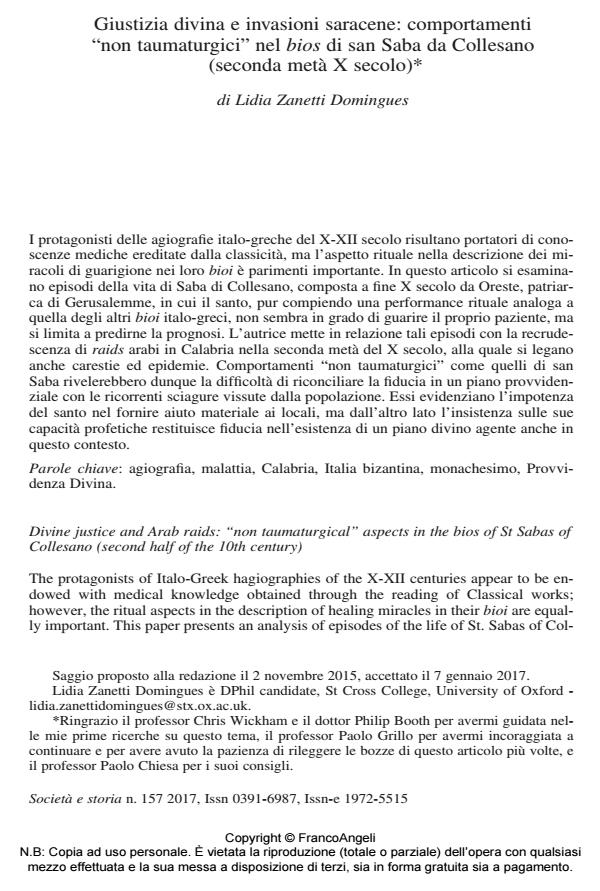Divine justice and Arab raids: "non taumaturgical" aspects in the bios of St Sabas of Collesano (second half of the 10th century)
Journal title SOCIETÀ E STORIA
Author/s Lidia Zanetti Domingues
Publishing Year 2017 Issue 2017/157
Language Italian Pages 26 P. 581-606 File size 106 KB
DOI 10.3280/SS2017-157009
DOI is like a bar code for intellectual property: to have more infomation
click here
Below, you can see the article first page
If you want to buy this article in PDF format, you can do it, following the instructions to buy download credits

FrancoAngeli is member of Publishers International Linking Association, Inc (PILA), a not-for-profit association which run the CrossRef service enabling links to and from online scholarly content.
The protagonists of Italo-Greek hagiographies of the X-XII centuries appear to be endowed with medical knowledge obtained through the reading of Classical works; however, the ritual aspects in the description of healing miracles in their bioi are equally important. This paper presents an analysis of episodes of the life of St. Sabas of Collesano, written at the end of the X century by Orestes, patriarch of Jerusalem, where the saint performs healing rituals comparable to those of the other Italo-Greek bioi, except that he does not seem able to heal his patients and limits himself to predicting their prognosis. The author links such episodes to the new wave of Arab raids in Calabria in the second half of the X century, with its aftermath of famines and epidemics. "Non thaumaturgical" behaviour such as that of St Sabas could therefore reveal the difficulty of reconciling the faith in a providential plan with the recurrent misfortunes experienced by the population. It highlights the helplessness of the saint in providing the locals with material help, while on the other hand the emphasis on his prophetical skills re-establishes faith in a divine plan operating even in these circumstances.
Keywords: Hagiography, illness, Calabria, Byzantine Italy, monasticism, Divine Providence
- Quarant'anni di medioevo sulle pagine di «Società e storia»: 1978-2019 Paolo Grillo, in SOCIETÀ E STORIA 178/2023 pp.697
DOI: 10.3280/SS2022-178004
Lidia Zanetti Domingues, Giustizia divina e invasioni saracene: comportamenti "non taumaturgici" nel bios di san Saba da Collesan (seconda metà X secolo) in "SOCIETÀ E STORIA " 157/2017, pp 581-606, DOI: 10.3280/SS2017-157009